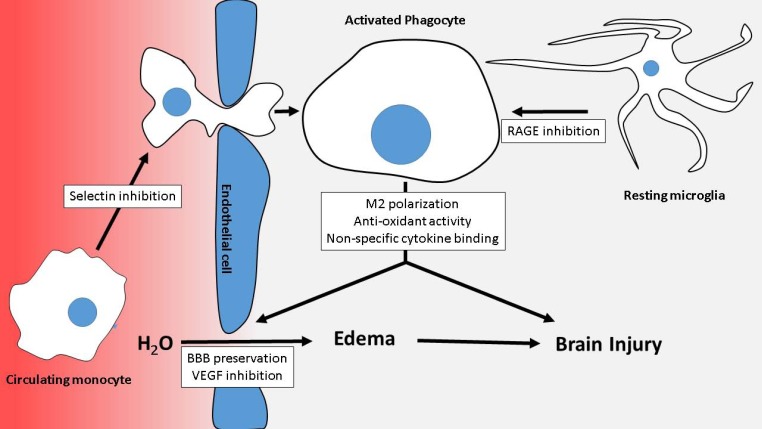Figure 2.
Summary of heparin’s modes of action. Several confluent processes combine to injure the brain including extravasation of circulating cells into the brain parenchyma, activation of microglia, production of harmful molecules and cytokines by activated phagocytes, and blood-brain barrier breakdown with subsequent vasogenic edema formation. Heparin antagonizes these processes, with heparin’s mechanisms of action indicated in the white boxes.

